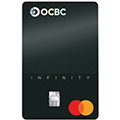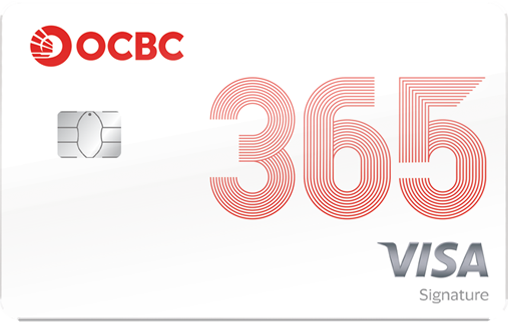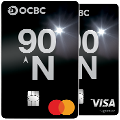My precious (metals)
My precious (metals)
A useful diversifier
Effective diversification relies on low correlation between constituents in a portfolio. Typically, in a traditional portfolio set-up, investors would hold a mix of equities and bonds. This is premised on the view that bonds will offset declines in equities during periods of market stress, seeing that it is the preferred low risk choice during market turmoil. This is expected to keep the volatility of portfolios low and stabilize returns.
Diversification can be improved by including instruments that are less correlated with existing assets in a portfolio. In this regard, some exposure to precious metals might be a good choice.
Precious metals refer to gold, silver, palladium and platinum. As an asset class, precious metals have exhibited low correlation with global equities and bonds, making it a useful portfolio diversifier for traditional equity-bond portfolios.
Not the typical commodity
One might be tempted to regard precious metals as general commodities that are vulnerable to the whims of global demand and supply. But that would be equivalent to me telling you that the sky is blue. Of course, these metals obey the law of supply and demand.
Being industrial metals, silver, platinum and palladium, are key raw materials in the production of certain goods. For instance, silver is largely used in the manufacturing of solar cells, while platinum is used in automotive catalysts. Palladium is used for a variety of products ranging from electronics to other industrial applications. The final demand for these products typically affects the trading price of the underlying raw materials.
But precious metals also serve another purpose – they are a good store of value, primarily because they are rare, hence, precious.
Look no further than gold. Investors typically rush for the yellow metal during market panics or when fear of inflation rears its ugly head. It is a safe haven asset.
Gold has been one of the better performing asset classes over the past couple of years as investors rush into its warm embrace during periods of volatility. Meanwhile, central bank buying has also boosted gold prices. Typically, gold forms part of a central bank’s reserves and monetary authorities have loaded up the bullion as a way to diversify from the US Dollar.
In terms of long-term total returns, precious metals have outperformed general commodities. These metals are precious after all.
Insurance against unexpected inflation
Precious metals might also be good insurance against inflation. When the value of cash decreases (i.e. you are not able to afford the same basket of goods with the same nominal amount of cash) due to inflation, having access to a stable store of value like gold is beneficial. The massive amount of liquidity pumped into the economy following the pandemic has put the US dollar and major currencies under pressure. Simply put, gold serves to be a stable source of value even as major currencies may be hit by depreciation when monetary supply increases.
This is especially pertinent in the current environment where central banks and governments have essentially spent a great deal of money to address the coronavirus problem. The long-term repercussions of unlimited quantitative easing and increasing government debts are still being vigorously debated in the profession today.
In any case, instead of choosing a side in this debate, perhaps it is best to keep some insurance against the unforeseen.
Diversify your portfolios with OCBC RoboInvest’s Precious Metal portfolio.
OCBC RoboInvest is an all-in-one digital platform that helps you invest easily at your own convenience.
Apply for an OCBC RoboInvest Account
Or log in here if you are an existing RoboInvest customer.
Disclaimers for Articles
Important Information The information provided herein is intended for general circulation and/or discussion purposes only. It does not take into account the specific investment objectives, financial situation or particular needs of any particular person. Please seek advice from a financial adviser regarding the suitability of any investment product taking into account your specific investment objectives, financial situation or particular needs before you make a commitment to purchase any investment product. The information in this document is not intended to constitute research analysis or recommendation and should not be treated as such. This does not constitute an offer or solicitation to buy or sell or subscribe for any security or financial instrument or to enter into a transaction or to participate in any particular trading or investment strategy. Any opinions or views of third parties expressed in this material are those of the third parties identified, and not those of OCBC Group. No representation or warranty whatsoever (including without limitation any representation or warranty as to accuracy, usefulness, adequacy, timeliness or completeness) in respect of any information (including without limitation any statement, figures, opinion, view or estimate) provided herein is given by OCBC Bank and it should not be relied upon as such. OCBC Bank does not undertake an obligation to update the information or to correct any inaccuracy that may become apparent at a later time. All information presented is subject to change without notice. OCBC Bank shall not be responsible or liable for any loss or damage whatsoever arising directly or indirectly howsoever in connection with or as a result of any person acting on any information provided herein. OCBC Bank, its related companies, their respective directors and/or employees (collectively “Related Persons”) may or might have in the future interests in the investment products or the issuers mentioned herein. Such interests include effecting transactions in such investment products, and providing broking, investment banking and other financial services to such issuers. OCBC Bank and its Related Persons may also be related to, and receive fees from, providers of such investment products. The information provided herein may contain projections or other forward-looking statement regarding future events or future performance of countries, assets, markets or companies. Actual events or results may differ materially. Past performance figures are not necessarily indicative of future or likely performance. Any reference to any specific company, financial product or asset class in whatever way is used for illustrative purposes only and does not constitute a recommendation on the same. Investors should note that there are necessarily limitations and difficulties in using any graph, chart, formula or other device to determine whether or not, or if so, when to, make an investment. The contents hereof are considered proprietary information and may not be reproduced or disseminated in whole or in part without OCBC Bank’s written consent. This advertisement has not been reviewed by the Monetary Authority of Singapore.










